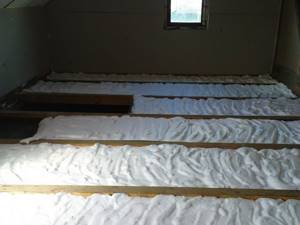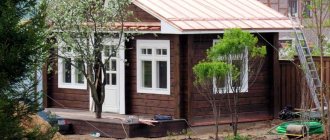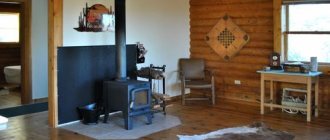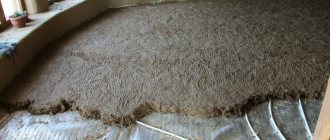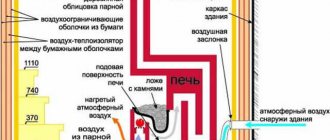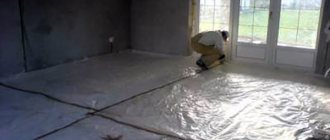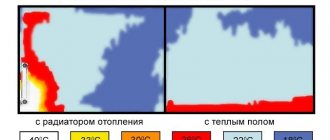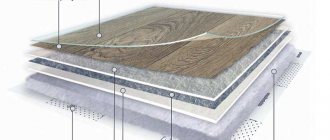- 39082
- basement floor insulation
The basement of a house can be used or unused, warm or cold. A heated basement usually does not create problems for residents. Cold is drawn into the house from the unheated room. How to insulate a floor above a cold basement?
The need for floor insulation
In a country house or city private house, the floors located above an unheated basement will always be cold. If, in addition to this, the subfloor is also damp, the floor may be a little damp. This does not have the best effect on the condition of the materials of the lower floor. The concrete base begins to delaminate due to dampness, and putrefactive processes begin to occur in the wooden one.
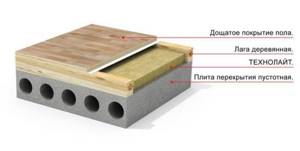
Expert opinion
Konstantin Alexandrovich
Thus, the operational life of the structure is reduced, which in the near future may lead to its failure. The floor and other structural elements of a residential building are insulated to reduce heat loss. These actions bring significant savings by reducing energy consumption during the cold season.
Building with a basement area
Owners of private buildings intended for permanent residence often think about how to cheaply insulate the floor and not spend a lot of money on the work. There is no need to save too much. Inexpensive insulation made from low-quality materials will lead to only one loss. But you shouldn’t carry out complex work where you can realistically do without them. Unfortunately, this cannot be done in buildings with a basement.
Since soil masses usually freeze to a significant depth, insulators must be installed in areas where there is maximum exposure to cold. The best option is external thermal insulation of basement walls. This will prevent the soil from coming into contact with the wall surface.
A good insulation option is extruded polystyrene foam. This is not to say that it is very expensive, but you cannot call it cheap either, since a large number of products have to be used on site. Expanded polystyrene boards have all the necessary properties to reliably protect the base from freezing. It is advisable to carry out the insulation itself along the entire height of the supporting structure.
The correct calculation of the thickness of the insulating material is calculated based on many characteristics, from the type of soil mass to the depth to which the soil freezes. When polystyrene foam is used to cover the underground areas of the foundation, they are subsequently backfilled with soil. The basement area can be finished with any suitable material. It serves as the final decorative and protective layer of the insulation system.
Insulation methods
- Work can be carried out using various methods. Both the basement ceiling and the floor itself may be involved in the process of thermal insulation. This is the area where the largest amount of heat is lost. This is especially true for concrete floors, which is a cold material. If you do not protect the concrete surface from cold air and blowing, you will have to forget about the efficiency of the heating system.
- If the level of humidity in the basement is high, mold may appear in the apartment or house, which will negatively affect the health of the residents. Due to high levels of humidity and low temperatures in the home, people will become sick more often. In order to block moisture from entering the premises, you will have to take care of high-quality waterproofing. Knowing which materials are best suited for this purpose, and owning the list of tools necessary for the work, anyone without construction skills can cope with the task.
- If heat insulation is carried out from the basement side, the finishing will be placed on its ceiling. This will ensure protection of the floor from the side of the home. This method does not differ in the variety of materials offered. You can use slab or roll insulation, which will be fixed to the ceiling using an adhesive composition. You can use dowel nails. One of the most expensive and effective solutions may be the use of sprayed polyurethane in liquid form. To apply it you will need special equipment and the involvement of specialists.
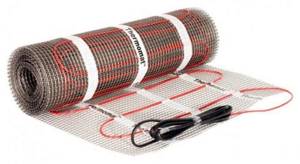
To insulate the upper part of the floor, bulk types of insulation are often used or they resort to installing a “warm floor” system, which can be electric or water. To increase efficiency, it is recommended to add a waterproofing and insulating layer to such a system. Otherwise, the heat generated by the “warm floor” will not warm the space of the rooms, but will go into the basement. In the basement itself, installing a heated floor is impractical. It is better to install additional thermal insulation in this area.
How to insulate the floor in a private house under linoleum
Even before starting work, you need to level the surface; without this, the linoleum will not lie as intended. There are many ways, it all depends on the material the floor is made of. As for insulation, it is best to use one of two options:
- Extruded polystyrene foam. Unlike ordinary foam plastic, it has a high density and does not bend under the weight of a person or furniture. The sheets can have a thickness from 20 to 50 mm; it is better to select thinner slabs so as not to raise the level too much. There are grooves that make it easy to join the sheets; the edges are cut with a hacksaw. For reliability, the joints are taped with foil tape.
- Polyethylene foam insulation with reflective surface. Its main advantage is its small thickness, which does not take up space; heat is retained due to the reflective coating, which should be directed into the room. The roll is simply spread out, cut to length and fixed; the seams need to be sealed with a special tape so that heat does not escape through the joints.
If the linoleum has a backing, it can be laid on top of the thermal insulation layer. If the covering is unlined, a special material made of cork or jute is laid; it is not worth laying the floor covering without it.
Do-it-yourself floor insulation
To carry out insulation work, it will be necessary to prepare certain tools, which will be universal for all cases:
- The building level with which the slope will be checked.
- A special mixer for construction, which will be used to mix the adhesive composition.
- Container for adhesive mass.
- Spatula for applying adhesive and putty solutions.
- Emery.
- A hacksaw used for cutting slabs or rolls of insulation.
Practical tips for creating high-quality insulation
The quality indicator of the insulation work performed will depend not only on the type of insulator used, but also on the technique of its installation. The maximum effect when laying mineral wool can only be achieved if the following conditions are met:
- The rough coating layer, consisting of a mixture of sand and cement, must be laid as evenly as possible and compacted thoroughly.
- The material for waterproofing can be roofing felt or polyethylene film.
- If the insulation boards are located in the same horizontal plane, without noticeable gaps between them, additional sealing of the joints will not be necessary.
- It is necessary to place a thin layer of screed on top, reinforce it with a galvanized mesh and fill it again with concrete mixture. You can use foam concrete, since it has less weight compared to the standard composition.
- Laying the flooring can only be done after the concrete has completely gained strength and dried.
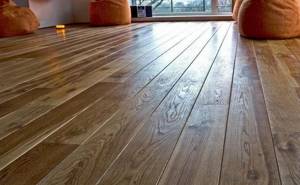
Thermal insulation of the floor surface located above a damp and unheated basement is a non-standard task. The room will require the creation of simultaneous protection from the penetration of moisture and cold. It is for these purposes that insulation materials were created, used in combination with other materials that provide protection from both moisture and steam. If the technology is strictly followed, living spaces will always be warm and comfortable, and the issue of possible mold in the home will be resolved once and for all.
Selection of material
Today, the construction market is rich in the presence of many types of materials intended for insulating floor surfaces. Insulation material can be presented in the form of a bulk mixture, liquid, rolls or blocks. And regardless of the choice of insulation material, it will perfectly cope with its function. Let's take a closer look at each of the above types of insulation.
Block insulation
Block insulation material is presented in the form of a slab or mat. It has a low thermal conductivity coefficient and low weight. Block insulation is perfect for use on the basement side.
In the manufacture of an insulating block or mat, materials such as mineral wool, polystyrene foam, basalt fiber and other materials with a composite structure are used.
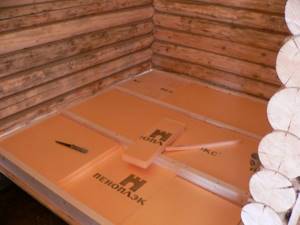
Bulk insulation
Bulk insulating mixtures for floor surfaces include several materials.
- Expanded clay gravel. It has a light porous structure and is produced by firing clay or shale.
- Wood shavings or sawdust. Waste obtained after working with wood.
- Foam chips. It is presented in the form of light spherical granules, which are foamed using isopentane gas or made from polystyrene foam residues. It is a durable and environmentally friendly material, widely used in construction and repair work.
- Slag waste. They are a valuable raw material in the field of industrial and road construction work. The main consumption of this material is in the cement industry, which currently uses approximately 23 million tons of granulated blast furnace slag every year.
The use of bulk insulation materials is necessary to fill the free space between the floor surface and its foundation. Bulk insulation material can be used on open ground and in a structure that has an underground floor or a full basement. All types of bulk insulation material can be laid using two methods: manual and compressor (a special compressor machine is required).
This kind of insulation can fill the entire space, including hard-to-reach places such as cracks. Among the disadvantages of this material, one can highlight the shrinkage characteristic of all bulk materials. When the bulk heat-insulating material dries, moisture evaporates, as a result of which the particles contained in the material begin to approach each other. The result of this process is a reduction in the overall size of the material.
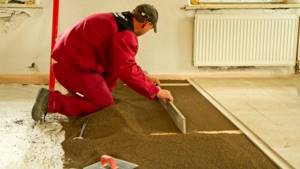
Manual insulation
Rolled thermal insulation can be presented in the form of mineral wool, any type of composite material with a cork base, or any type of multilayer insulation based on foil.
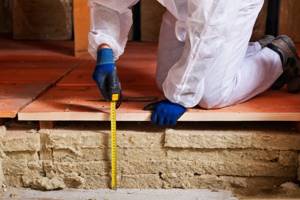
Liquid insulation
Liquid insulation is a cement mortar containing foam chips, wood shavings, expanded clay gravel and other bulk insulation materials. If you have all the necessary building materials and tools, you can prepare such a solution yourself at home. If necessary, it is possible to purchase ready-made foam-based insulation material.
If you have special equipment, it is quite easy to apply. After hardening, the insulating foam has technical characteristics close to foam chips. To make “penoizol”, the following are used: polymer urea resin, filtered water, orthophosphoric acid, designed to accelerate the hardening process of the main components, and a foaming element that contains approximately two percent oil of vitriol.
